Rites of Passage in Celtic Traditions: Exploring Ancient Ceremonial Practices
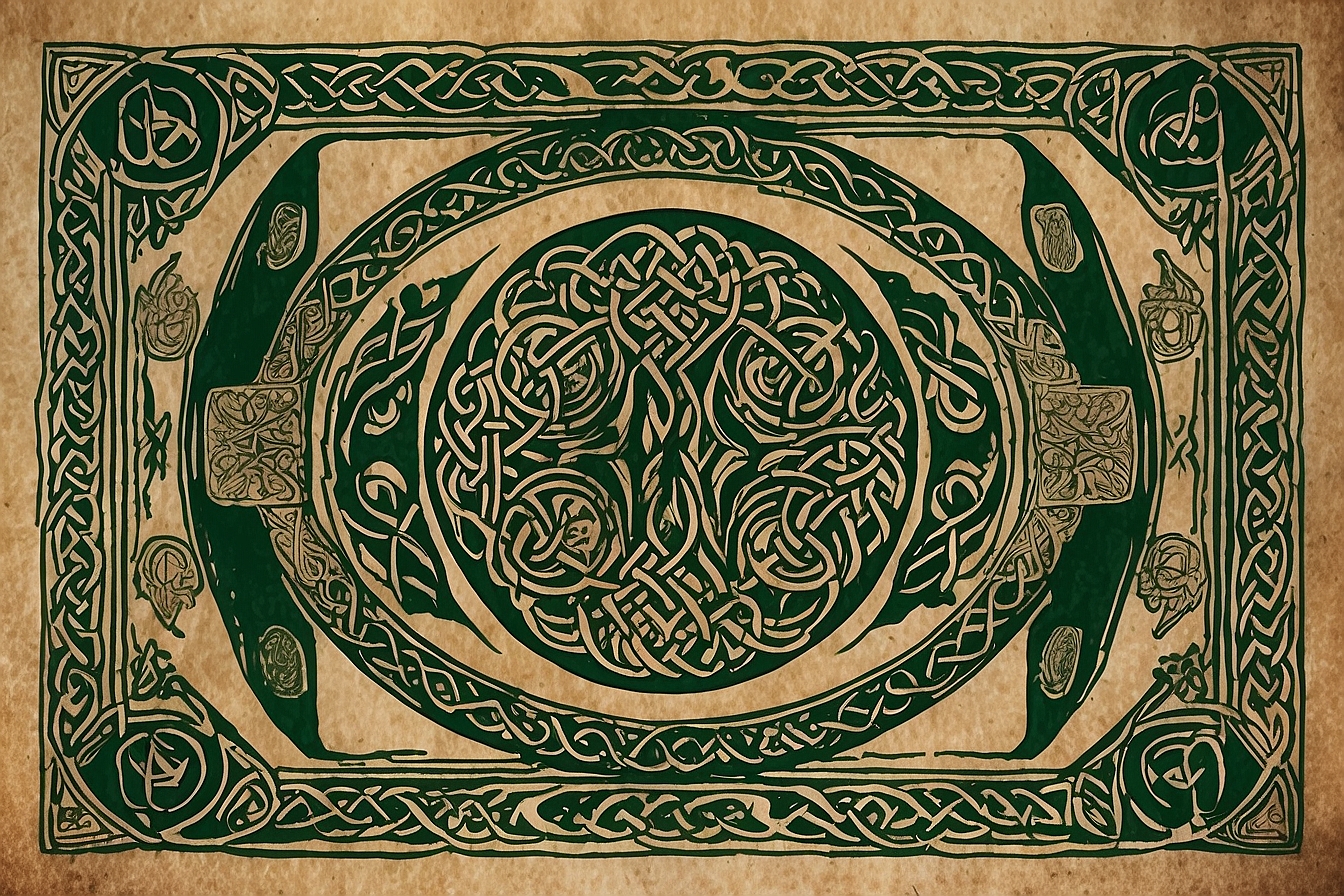
Updated On: April 24, 2024 by Salma Ihab
Rites of passage in Celtic traditions are key elements marking significant transitions in the lives of individuals in many societies, including those of the ancient Celts. Their culture showed profound respect for these transitions through the ceremonial practices that marked the journey of life from birth to death. The Celts, a diverse group of tribal societies in the Iron Age and Medieval Europe, had a rich tapestry of beliefs and rituals that facilitated the change of status of individuals within their communities. This array of cultural practices not only reflected the values and beliefs of Celtic society but also functioned to maintain the social structure and pass on traditions from one generation to the next.
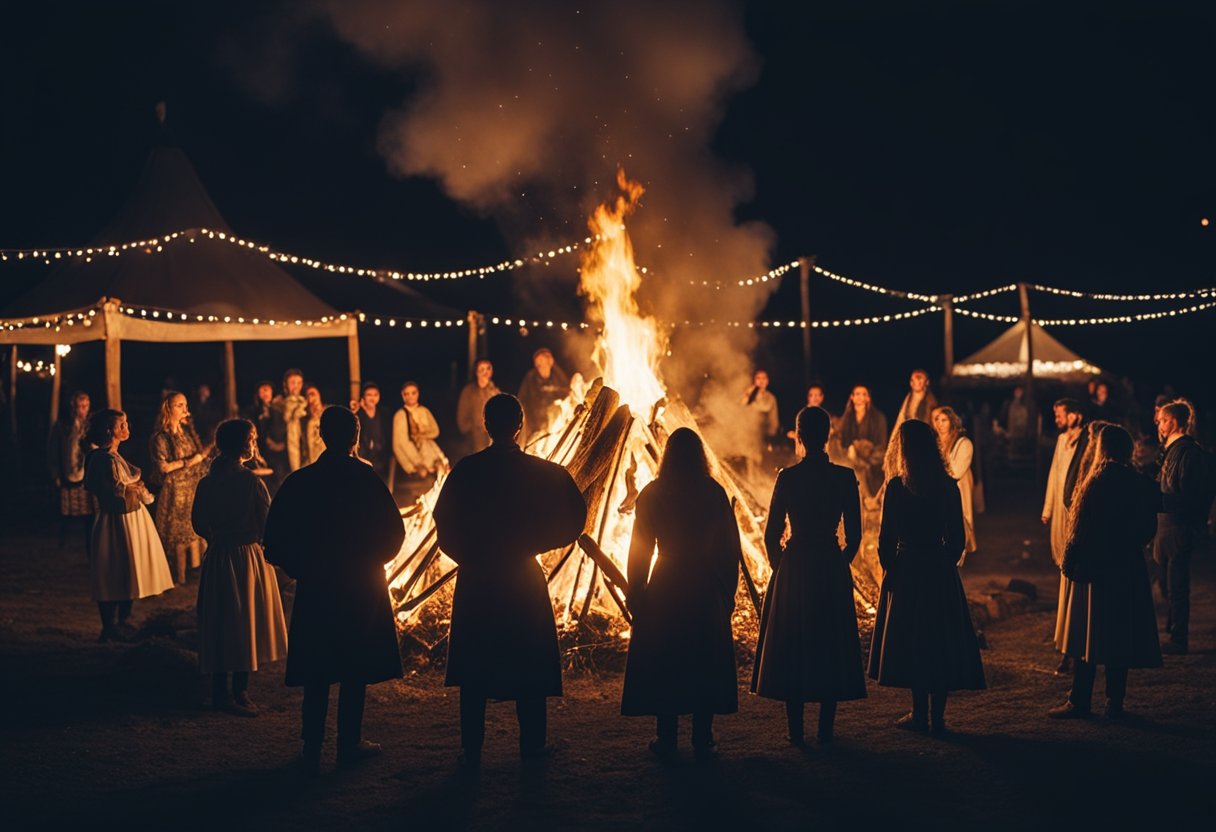
The life cycle of an individual in Celtic culture was celebrated with various rites of passage. Each ceremony was intricately intertwined with both the seasons and the agrarian calendar, emphasising the Celtic connection to nature and the divine. Births, coming of age, marriages, and even death were not only personal affairs but events that involved the whole community. These ceremonies were often led by druids, who were the religious leaders, legal authorities, lorekeepers, and political advisors of the Celtic tribes. Their guidance ensured that each rite was carried out with the proper reverence and adherence to tradition, reflecting the spiritual significance and the psychological impact of these transitions on the individual and society.
Table of Contents
Historical Context of Celtic Rites
Celtic rites have an intricate historical context, shaped significantly by the Gallo-Roman period and the arrival of Christianity. These elements, alongside the pivotal roles of druids, vates, and bards, defined the religious and cultural tapestry of the ancient Celts.
Gallo-Roman Period and Christian Influence
During the Gallo-Roman period, Celtic ritual practices began to amalgamate with Roman influences. This interaction led to the emergence of a syncretic culture, blending Celtic religious rites with that of the Roman pantheon. With the advent of Christianity, numerous Celtic spiritual customs adapted to or were supplanted by Christian rites, yet some distinct Celtic practices persisted. This syncretism was evident in the art and archaeological remnants, which depict a mingling of Celtic motifs and Christian iconography.
Christianity shaped Celtic traditions from the 1st millennium CE. Many of Celtic deities and their associated rituals were reinterpreted within the Christian framework or otherwise marginalised. Nonetheless, Christian religious leaders often utilised the existing reverence for Celtic rituals to facilitate the transition to Christian worship practices.
The Role of Druids, Vates, and Bards
Druids were the learned class among the ancient Celts, responsible for officiating religious rituals, legal matters, and education. They played an essential role in society and as mediators between the gods and people. Archaeological evidence and classical accounts affirm the Druids’ role in various rites of passage and seasonal festivals, which were central to the Celtic religion.
Vates, often skilled in divination, and bards, the keepers of tradition through poetry and song, also contributed to the spiritual and cultural life of the Celts. The continuity of their art forms signifies the persistence of Celtic cultural identity even as overarching religious notions shifted.
Collectively, these figures were prominent in the ritual arena and were pivotal in maintaining the historical context of Celtic religious practices through their sacred functions and creative expressions.
Birth and Naming Ceremonies
In the rich tapestry of Celtic traditions, birth and naming ceremonies are essential for welcoming a new life into the community, symbolising an individual’s passage into the realm of the living, and intertwining them with the continuity of family and social bonds.
Significance of Names and Baptism
The naming of a child within Celtic culture is steeped in significance, resonating with a reverence for ancestral lines and the spiritual essence of the individual. It is an act interwoven with religious beliefs and a sense of community, often accompanied by rituals that draw upon the ancient customs passed down through generations.
During baptism ceremonies, which are rooted in Celtic religion, a newborn baby is formally introduced to the community. These rites of passage go beyond mere ceremony; they are laden with symbolism, marking the child’s integration into their culture and the greater folds of the human family. The rituals conducted, including the use of sacred waters, have held a place of importance since time immemorial, establishing a sacred bond between the individual and the communal faith.
The selection of a name is a significant part of this rite of passage, as it’s often chosen to honour a beloved family member or to reflect the qualities that the parents hope to see in their child. In Irish traditions, for instance, the first son might be named after the paternal grandfather as a way of preserving lineage and strengthening family ties.
Each of these birth and naming ceremonies is carried out with great care, ensuring that the child is lovingly woven into the fabric of Celtic society. It’s a moment of joy and communal celebration, acknowledging the sacred journey of life that the child has embarked upon, surrounded by those who will guide and support them.
Coming of Age Traditions

In the rich tapestry of Celtic traditions, the transition from youth to adulthood is marked by profound rites of passage. These ceremonies are pivotal for the individual and signify their readiness to assume greater societal roles.
Initiation Rites
Initiation rites serve as the gateway into adulthood, denoting a young person’s journey into social maturity. In Celtic Druid tradition, these rites are often tied to significant birthdays, such as the 17th or 18th year, acknowledging the individuality and personal growth of each youth. During these ceremonies, the community recognises the transformation of boys into men and girls into women, celebrating the new phase of life that these young adults are entering.
Educational and Social Responsibilities
With the coming of age, education evolves to focus on imparting wisdom and life skills crucial for societal contribution. This phase instils the tasks and responsibilities that society expects them to uphold. Teaching methods range from storytelling to practical guidance, ensuring that knowledge is passed down and the cultural fabric remains intact. These practices help to continue traditions and maintain the balance of communal harmony and progress.
Marriage and Union Rites
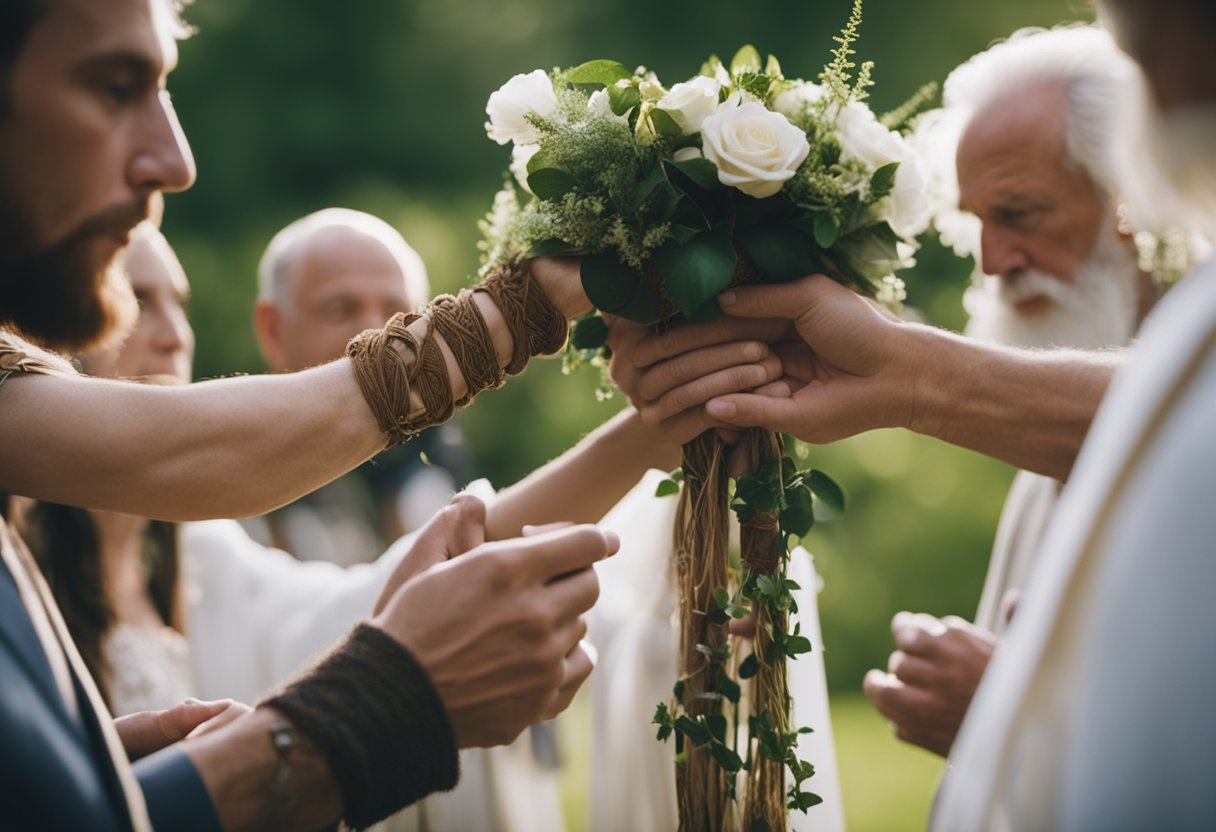
In Celtic traditions, matrimony was a celebrated way of joining not just two individuals but also binding clans and communities. Detailed rituals and symbols marked these auspicious events, deeply embedding them within the cultural and religious tapestry of Celtic life.
Wedding Ceremonies and Symbolism
Wedding ceremonies in ancient Celt societies were affairs rich in cultural symbolism designed to honour the connection between the couple and the natural world. Handfasting was a significant element of Celtic weddings, symbolising the binding together of the couple’s lives. This rite often involved tying the hands of the betrothed with ribbons or cords during the ceremony, a practice still observed in some modern Celtic nuptials.
The use of symbolic items such as the Claddagh ring, which represents love (heart), friendship (hands), and loyalty (crown), was a notable feature of these ceremonies. It was often exchanged as part of the wedding vows to signify commitment. Similarly, a besom jump, or jumping over a broomstick, was sometimes included as a tradition marking the couple’s entrance into a new life together.
Music played a crucial role, with the iconic sounds of bagpipes accompanying the processional and other parts of the celebration. These instruments brought a sense of grandeur and solemnity to the proceedings, echoing the deep-seated cultural resonance music holds within Celtic communities.
Celtic wedding traditions served as an integral passage for individuals, symbolising not just their union but their shared future and integration into the community’s social and spiritual fabric. These ceremonies were carefully preserved in literature and religion, contributing to our rich understanding of Celtic society.
Death and Afterlife Beliefs
In the rich tapestry of ancient Celtic traditions, the rites of passage surrounding death were integral and reflective of a profound belief in the afterlife. These customs shed light on the Celt’s perspectives towards the soul’s journey beyond mortal life.
Funeral Practices
Ancient Celts accorded great significance to funeral rites, performing elaborate ceremonies to honour the deceased and prepare them for the afterlife. They buried food, weapons, and ornaments with the dead, suggesting a belief that the soul required such items beyond death. Notably, evidence from archaeological sites demonstrates the diversity of these practices, ranging from cremation to burial in standing stones, tumuli (earth mounds), and cairns (stone piles).
Concepts of the Otherworld
Celts envisioned the afterlife existing in an Otherworld, occasionally described as lying underground or situated on distant islands. This enigmatic realm was populated by gods, spirits, and, posthumously, the souls of the dead. It was conceived as a mirror image of the living world, yet one that was evergreen and abounding in joy, where an ethereal existence awaited the departed. Descriptions of this Otherworld, such as Annwn in Welsh mythology, depict it as a celestial paradise, emblematic of restful repose between incarnations.
Seasonal and Agricultural Festivities
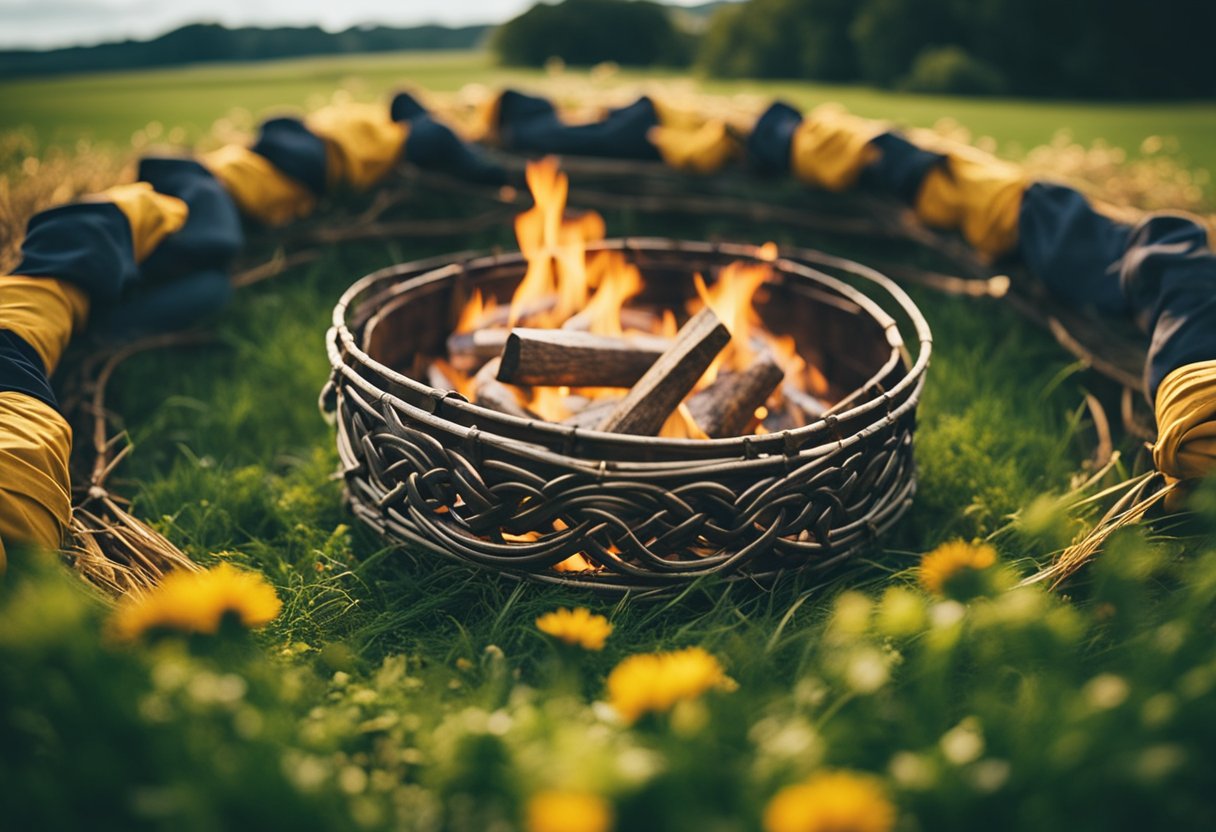
In Celtic traditions, the rhythm of life revolved around the agricultural year, with festivals that marked key seasonal changes and formed an essential part of the social structure. These events were steeped in ritual significance, reflecting a society deeply connected to nature and the cycles of the earth.
Rituals of Nature and Harvest
Nature and Society: The Celts observed nature’s patterns closely, as their livelihood was inextricably linked to the land. The changing seasons signalled times for planting, tending, and harvesting crops, and these moments were accompanied by communal celebrations that reinforced the bonds within society.
- Spring Equinox signified the balance of day and night and was associated with preparations for sowing seeds.
- Beltane marked the beginning of summer, celebrated with bonfires to encourage the fertility of land and livestock.
Oak Tree and Stonehenge: Not just an agricultural people, the Celts revered certain natural sites and elements like the oak tree, a symbol of strength and endurance. Monuments such as Stonehenge were aligned with celestial events, further cementing the link between their rituals, nature, and the cosmos.
- The Oak Tree played a central role in midsummer festivals, representative of the king of trees, under whose branches people gathered.
- Stonehenge stood as a testament to the seasonal celebrations, especially during the summer and winter solstices.
Agricultural Festivities and Ceremonies: Each festival had corresponding ceremonies involving sacrifices, feasts, and specific rituals designed to honour the deities and ensure a bountiful harvest. These practices formed the fabric of Celtic religious and social life, maintaining harmony between the people and the land they cultivated.
- Lughnasadh, the beginning of the harvest season, featured athletic games and was a time for handfasting ceremonies.
- Samhain, the start of the darker half of the year, was also the Celtic New Year and one of the most important agricultural festivities that involved divination rituals for the coming year.
By following these practices, we can see how our ancestors lived in close connection with the environment, marking each season with rituals and festivities that not only acknowledged their reliance on nature but also helped to shape the cultural and societal constructs of their time.
Warfare and Chieftain Rites
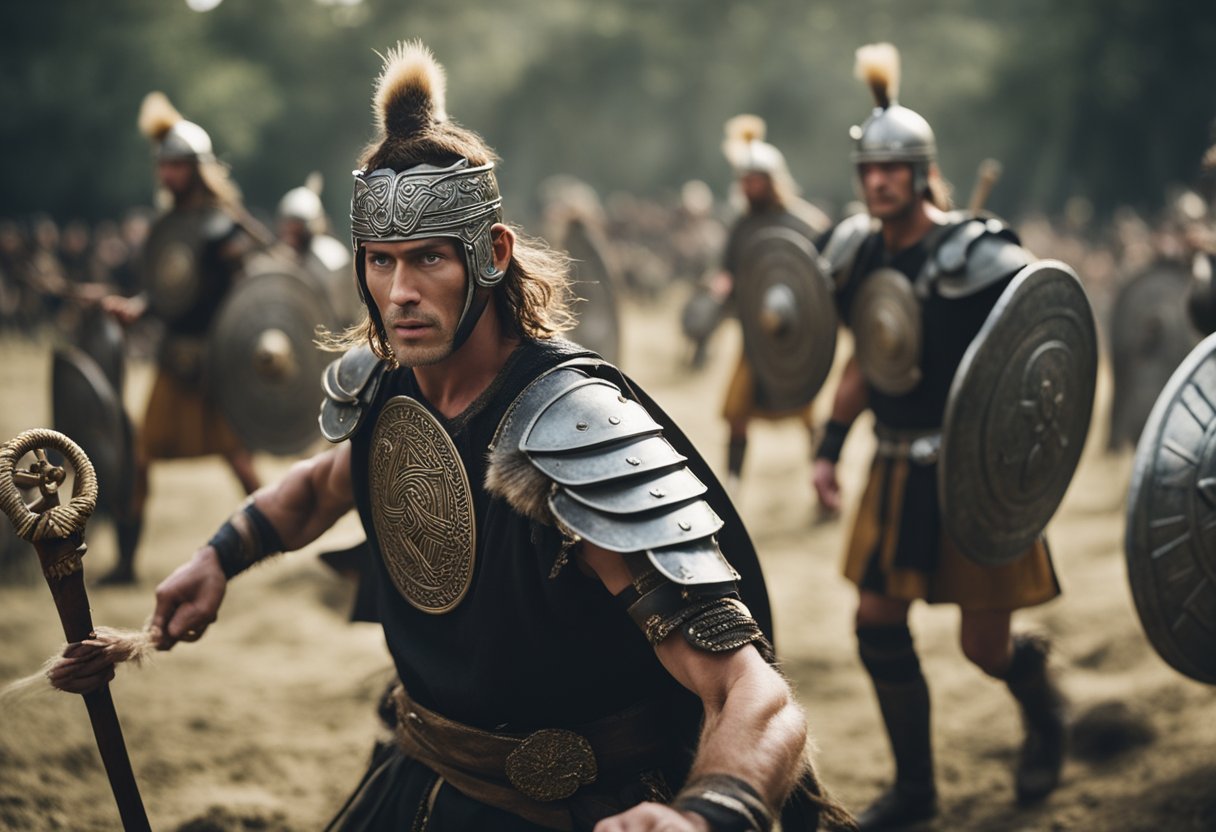
In Celtic traditions, the passage into leadership and the warrior class was marked by ceremonial practices that underscored the importance of these roles within the community.
Elevation of Warriors and Leaders
Warriors in Celtic societies were often elevated through various rites of passage, which signified their transition from young members of the community to respected fighters. These rituals were integral in marking a warrior’s readiness to defend their territory and uphold the values of their tribe. The ceremony would likely involve the gifting of a sword, a significant symbol of a warrior’s skill and status.
The rite of passage for becoming a chieftain also involved stringent tests of leadership and valour. Prospective leaders proved their worth through demonstrations of tactical knowledge in warfare and an ability to inspire and lead their kinsmen. A chieftain was not just a military leader but a central figure who wielded considerable influence over the community, acting as both a protector and visionary for the people.
These tribal ceremonies not only marked a personal transition for the individual but also served as a public declaration of their new role within the societal structure. They became the embodiment of the community’s aspirations, and their heroic status was celebrated through epic tales and songs that reinforced their legendary status.
Artistic Expressions of Transitions
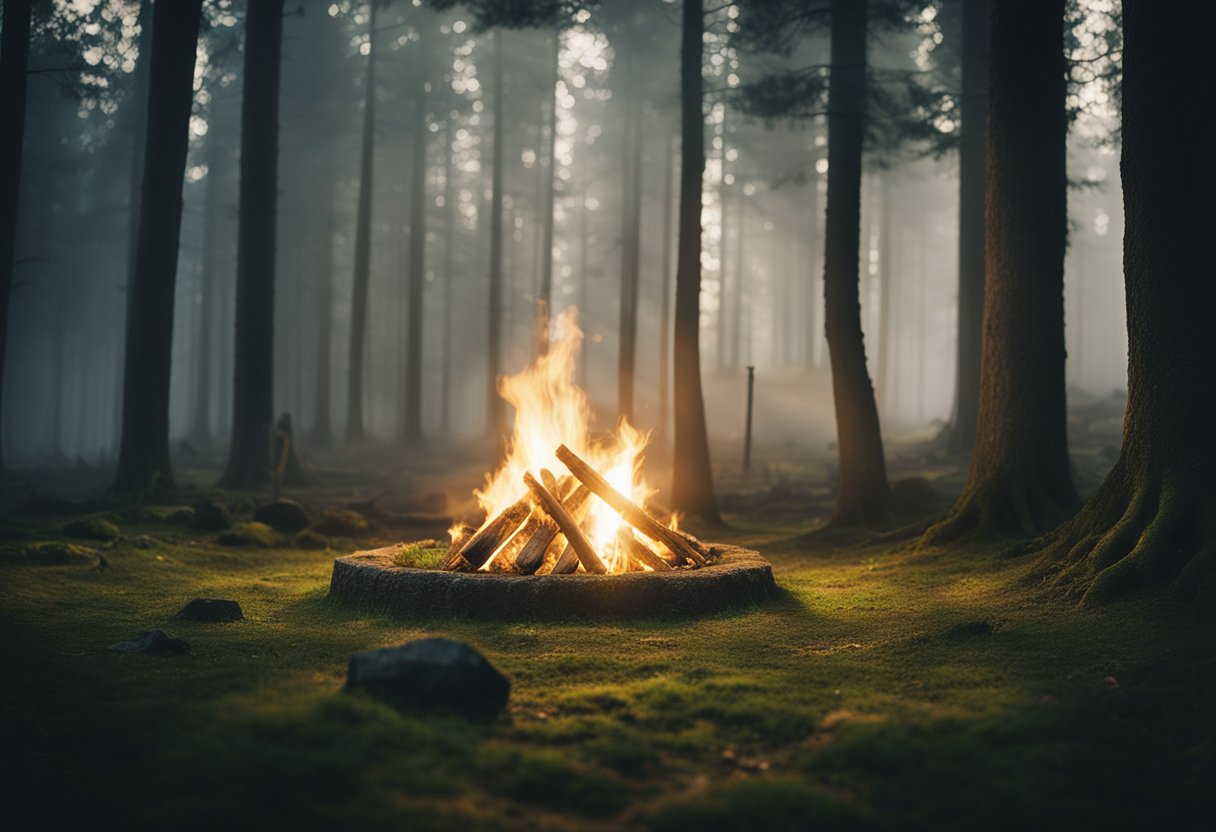
In Celtic traditions, artistic expressions play a pivotal role in marking the rites of passage. This section explores the specific forms these expressions take in music, dance, stone, and metalwork.
Celtic Music and Dance
Celtic music and dance are integral components of our cultural celebrations, especially during transitions such as coming-of-age ceremonies, weddings, and funerals. Singing and dancing are not just forms of entertainment but are deeply symbolic behaviours that convey the emotions and stories of the community. A dance like the Irish jig, often accompanied by lively tunes from fiddles and tin whistles, can symbolise the joy of life’s journey or the transition from youth to adulthood. Irish folk music, with its poignant ballads and exuberant melodies, is often performed to honour the significant rites of passage in Celtic life.
Stone and Metalwork
Our stone and metalwork, such as the crafting of intricate Celtic crosses and the creation of monumental sculptures, serve as enduring symbols of transition and transformation within Celtic culture. These pieces are not simply art; they are laden with meanings and intent, often inscribed with knotwork or spirals that represent the journey of life and the pivotal transitions within it. The crosses that dot the landscape at sacred sites or the Claddagh rings exchanged in marriage rituals are potent expressions of our ritualistic culture. Each piece embodies a connection to our ancestors and to the land, honouring the life transitions that have shaped our communal identity.
Influence of Celtic Rites on Modern Practices

Celtic rites continue to influence a range of contemporary traditions and religious ceremonies. This can be seen in community gatherings where Celtic heritage is celebrated, as well as adaptations in Christian religious practices like baptism and marriage.
Contemporary Celebrations of Celtic Heritage
We now witness a vivid tapestry of events and festivals that serve to both remember and revitalise our Celtic roots. Annual festivities such as Samhain, known today as Halloween, carry the essence of ancient Celtic rites into the present day, blending pagan customs with modern festivities. Furthermore, our artistic heritage, deeply engrained in Celtic knots and symbols, frequently adorns both public spaces and private collections, reflecting the enduring influence of Celtic art and culture on nowadays society.
Adaptations in Current Religious Ceremonies
Our religious ceremonies, especially within Christianity, have been significantly shaped by Celtic influences. The way we approach milestones, such as marriage and baptism, often incorporates elements found in early Celtic rites of passage. For instance, the incorporation of water and specific blessings during a baptism can be seen as an evolution of age-old Celtic purification rituals. Moreover, in our educational pursuits at theological institutions, the study of Celtic Christianity provides vital insights into how our religious and societal structures have been inflicted by these ancient practices.
By maintaining and adapting ancient Celtic traditions, our present cultural and religious landscape is a reflection of a past both cherished and perpetuated.
Psychological and Societal Impact
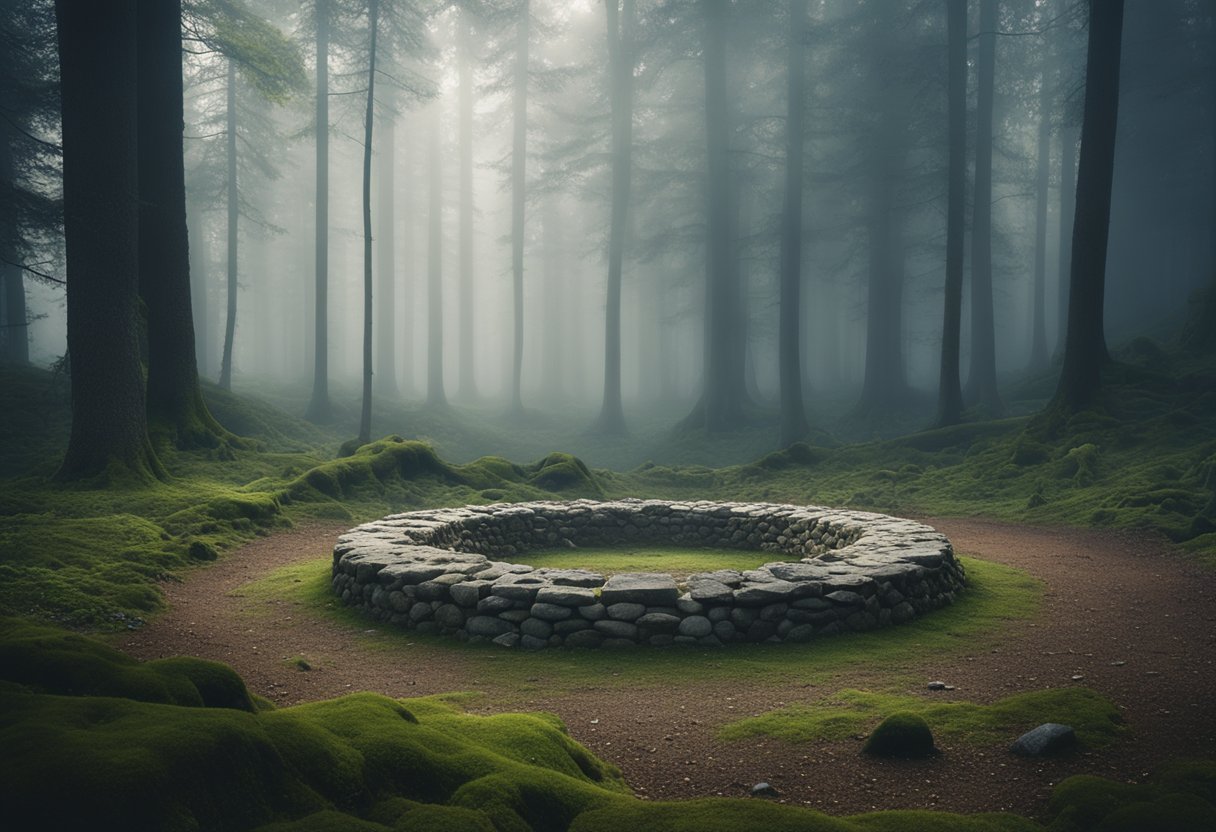
In exploring rites of passage within Celtic traditions, we must recognise their potent effects on both the individual and the community. These ceremonies not only mark transitional periods but also significantly influence personal growth and societal cohesion.
Group Identity and Personal Development
Rites of passage cultivate a strong sense of community and belonging, reinforcing group identity. As individuals partake in these ceremonial acts, they experience an intrinsic change in their social status, which bolsters their sense of identity within the group. This transformation is crucial for personal development, embedding values and affirming one’s role in society.
Mental Health and Life Transitions
These transitional rituals also serve as critical psychological milestones. They provide a framework for navigating the challenging waters of change, addressing mental health by offering support and recognition from the wider community. By demarcating key life stages, they help reduce anxieties associated with growth. However, it’s important to note the potential risks; when such transitions are not adequately supported or recognised, individuals may face increased susceptibility to mental health issues, potentially including suicide. It is, therefore, paramount that these transitions are managed with care to foster psychological resilience and well-being.
Conservation and Education
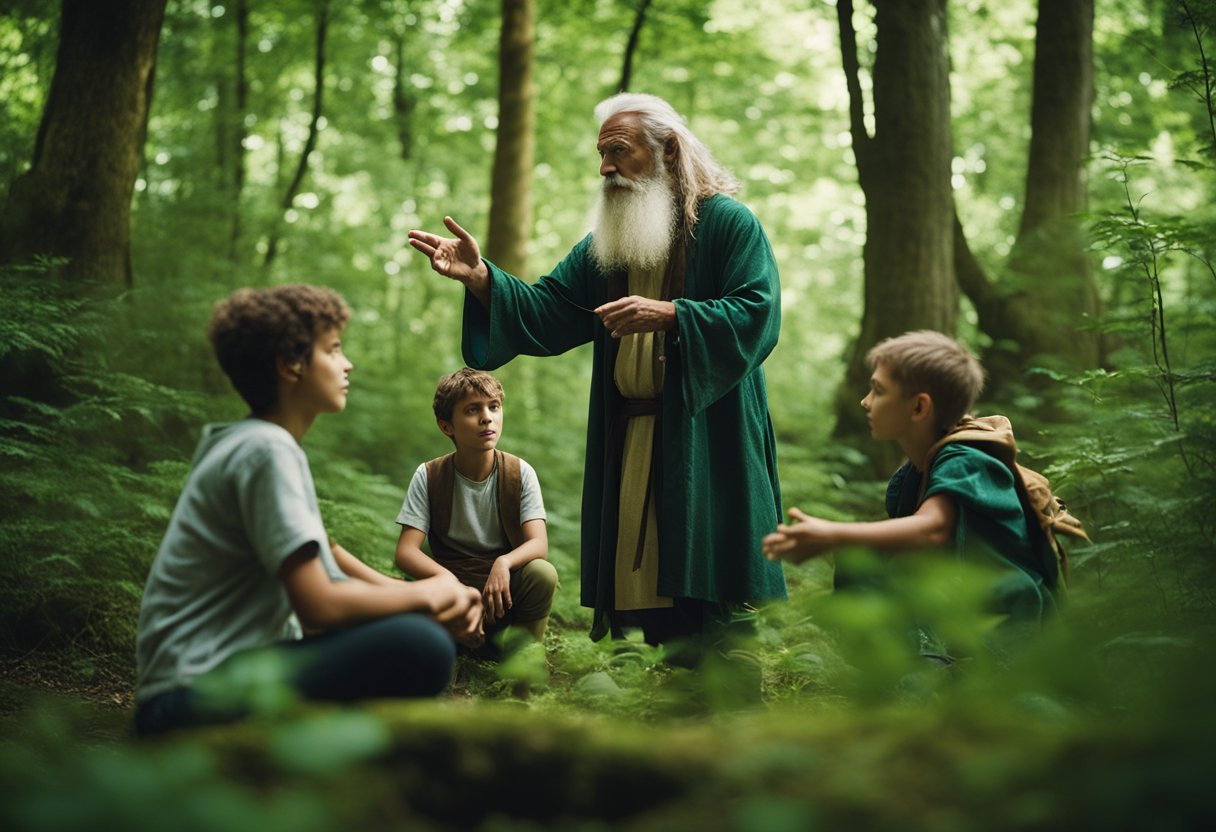
In our exploration of rites of passage within Celtic traditions, it becomes evident that the conservation of these cultural practices ties deeply with their educational aspects. Our focus within this section lies in how these traditions are preserved and conveyed through various educative means.
Preservation of Traditions
We recognise that the preservation of cultural rites is fundamental to maintaining a living heritage. Traditionally, these rites—marking significant life stages—are a cornerstone of social and spiritual structures, serving as connective threads within Celtic societies. Through initiations and cultural enactments, individuals are woven into the community’s narrative, thereby preserving the collective cultural identity.
Teaching and passing on knowledge about these traditions contribute to their survival. It is essential to document oral histories and customs to ensure that such valuable heritage does not fade with the passage of time. In this regard, the utilisation of both contemporary and traditional media plays a pivotal role in the perpetuation of practices that extend well beyond historical records.
Outdoor and Heritage Education
Outdoor education provides a powerful platform for rendering theoretical knowledge into practical experience. By being close to nature, participants in modern rites of passage can gain an authentic understanding of the beliefs and practices that underpinned the lives of their ancestors. Traditional rites of passage, intrinsically linked with the natural world, find new resonance in such settings.
Combining heritage education with outdoor activities enables a vibrant, hands-on approach to learning. It is here that the concepts of education connect fluidly with the practice of conservation. Engaging with the environment and historical sites offers a unique opportunity to delve into past customs within their original contexts, fostering greater appreciation and a desire to maintain these practices for future generations.
Frequently Asked Questions
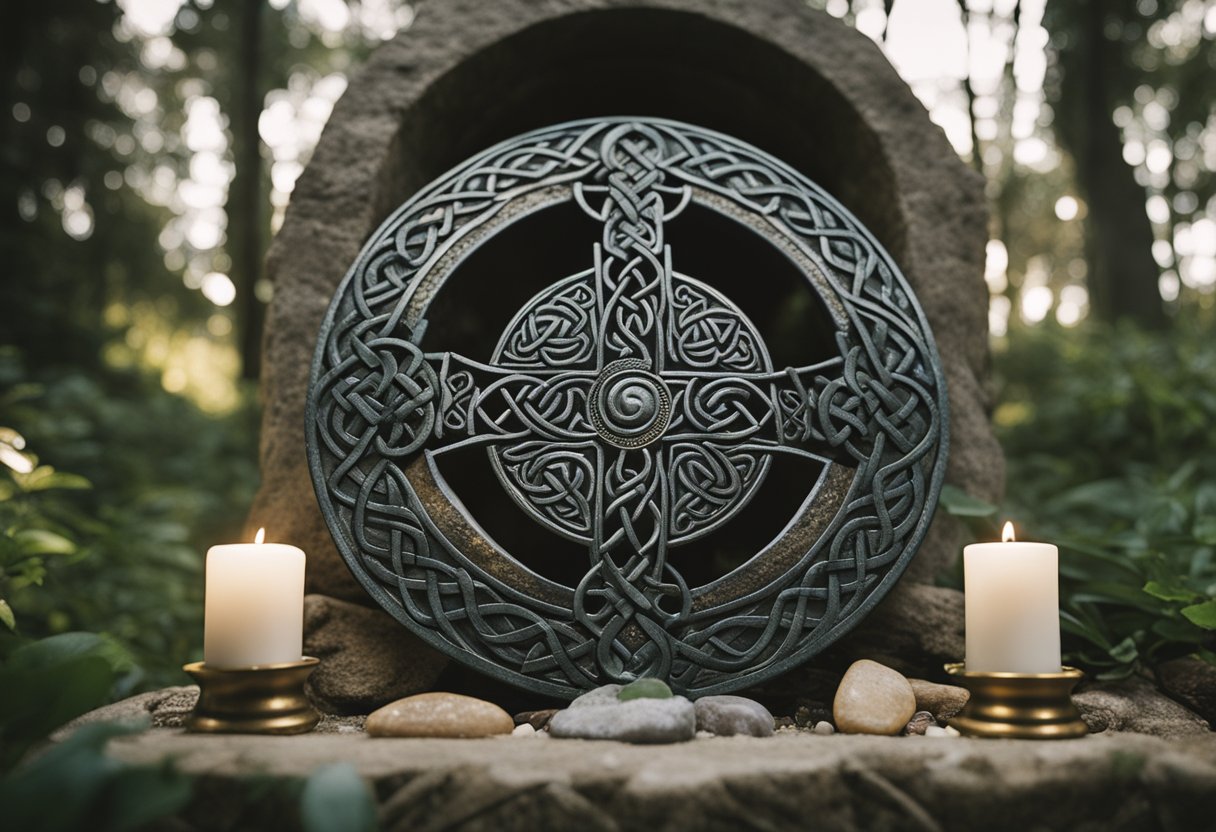
In this section, we’ll address some commonly asked questions about Celtic rites of passage and their cultural significance.
What are the traditional Celtic ceremonies for transitioning into adulthood?
Celtic societies held ceremonial rites to mark the transition from childhood to adulthood. These ceremonies often involved challenges or tasks designed to prove the readiness of individuals to take on adult responsibilities.
How were significant life events marked in Celtic society?
Significant life events such as births, marriages, and deaths were richly celebrated with varied rituals and ceremonies, each designed to honour the individuals involved and their place within the community and the natural world.
Can you describe the role of ritual sacrifice within ancient Celtic traditions?
Ritual sacrifices in ancient Celtic traditions were undertaken to honour the gods, ensure fertility, and bring prosperity. These sacrifices often took the form of offerings rather than the more sensationalised view of human sacrifice.
In what way did shamanic practices influence Celtic rites of passage?
Shamanic practices in Celtic traditions were integral to rites of passage, often involving meditative journeys and communication with the spirit world to guide and protect individuals during their transitions in life.
What cultural traditions are associated with Celtic shamanism?
Cultural traditions associated with Celtic shamanism include divination, the use of trance states to communicate with spirits, and nature-based rituals that reflect Celtic reverence for the land and its entities.
Where were the principal ritual sites located in Celtic regions?
Principal ritual sites in Celtic regions were often natural landscapes deemed to be of spiritual significance, such as springs, groves, and hills, serving as potent locations for the performance of rituals and ceremonies.






